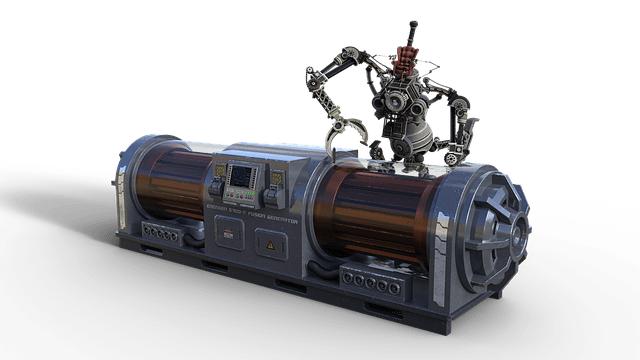
Due to labour shortages and the pandemic, businesses and organisations are increasingly exploring ways to work smarter and more efficiently with the manpower they have
There are a plethora of tasks within any business that simply don’t need to be done by a human being. That’s where hyperautomation comes in.
In short, hyperautomation is when an organisation combines advanced technologies to automate as much of the business as possible. By connecting all the siloed front-end and back-end applications used by organisations, hyperautomation has the potential to make businesses more efficient, reduce their margin for error and free up people’s time for more creative or strategic endeavours.
Over the last year, the adoption of automated solutions has risen exponentially. In 2022, research from Oracle suggested that over 31% of businesses have now fully automated at least one function. But with a new era of hyperautomation on the horizon, the big question is, are businesses ready?
Here are three ways businesses can pursue hyperautomation.
1. Automate the basics first
When adopting automation, the temptation is to try and solve all your problems at once. But, more often than not, this approach ends up doing the complete opposite. Instead, businesses ironically struggle to migrate and quickly return to the slow manual processes that they were using before.
Fortunately, running before you can walk is easily avoidable. Start by identifying and automating mundane tasks of low complexity and high frequency. Setting up automations for jobs and activities you rarely do, doesn’t make any sense. Similarly, don’t begin with tasks that actually require human creativity, they are rarely simple. Therefore, businesses should initially identify basic time-draining tasks. Activities that usually fall into this category, include data entry, data extraction and sending files to the right stakeholders.
Another common mistake is falling for the AI hype. Don’t try to over-engineer your workflow with some complicated AI solution that doesn’t really work. Instead, begin with automations that employ deterministic logic. So, when ‘x’ is used, ‘y’ happens. Some businesses will no doubt be passed this stage, but in all honesty, 99% of companies haven’t exhausted the potential of simple formula-based automation.
2. Harness crucial data
When used and gathered properly, data can be an extremely powerful resource. Many market leaders rely heavily on data to stay informed and improve their performance. Yet, in 2020 a Seagate survey revealed 68% of all data within an enterprise goes unused.
In order to transfer data quickly and efficiently, any automation requires access to data. Take copy-pasting, one of the most common data tasks; Given the correct access, automation can significantly expedite this process. So your company needs those figures by 8am, automation will stay up all night for you. The same goes for hyperautomation, the only difference is it needs more data from more sources.
When we talk about data, it’s important to highlight the two main categories of information, ‘structured’ and ‘unstructured’ data. Perhaps more well known, structured data refers to data that is formatted and more clearly organised, such as numerics found in an Excel spreadsheet.
Meanwhile, unstructured data simply means data that does not contain a predetermined model or schema. For example, information found embedded within images, videos and text files. While both are important, it is the latter that organisations often struggle to exploit. Information found within files like PDFs is generally much more difficult to extract, and therefore harder to automate.
To prepare for hyperautomation and make it a smoother and easier transition, businesses must adopt tools that favour structured data. This way, because of the readable format, hyperautomation and AI technology will be able to process and interpret larger amounts of information. Resulting in faster results and better insights based on historical data and trends. Data isn’t scary, it’s essential and must be embraced.
3. Involve other teams and staff
Even if you work alone, it is likely that successful automation will rely upon and impact multiple parties. Therefore, ensuring that these individuals, groups or clients are included in the process, is extremely important.
Given the number of processes that can be and are automated, the priority and benefits can vary for different employees and departments. With this in mind, it is vital to consider how hyperautomation will likely change and alter the responsibilities of others. This will ensure good forward planning and ultimately facilitate and support digital transformation.
To further boost efficiency, by predicting the impact of automation, business leaders and managers can redistribute resources and even retrain staff. Organisations can then pivot away from the manual and administrative processes, and instead focus their attention on areas that are not yet ready for automation.
Finally, businesses must ensure all relevant teams adopt automation concurrently. This will help avoid fatal bottlenecks, and ensure that gaps in legacy processes are addressed early. Only then, once an organisation has been able to properly automate several business processes effectively, is a business ready to fully optimise hyperautomation.
When it comes to joining the dots, hyperautomation is going to be a gamechanger. But, for now, businesses must focus on doing the basics well.
About the Author
Niels Martin Brochner is the co-founder and CEO of the Copenhagen-based company Contractbook – a contract lifecycle management platform that specializes in data-driven contract automation. Supported by Bessemer Ventre Partners and Google via Gradient Ventures, Niels’ company has over 250,000 users in 85 countries and is utilised by industry leaders such as TED, The Student Hotel, Mutebox and E.On. Niels is a Forbes contributor and was named as one of Denmark’s 100 best young business talents in 2019. He also holds a Master of Arts in International Management from The University of Westminster.
Featured image: ©FunTap
Source: https://technative.io/how-can-businesses-pursue-the-new-age-of-hyperautomation/


